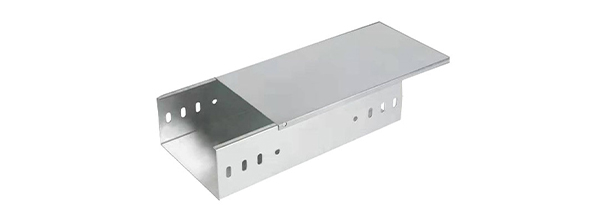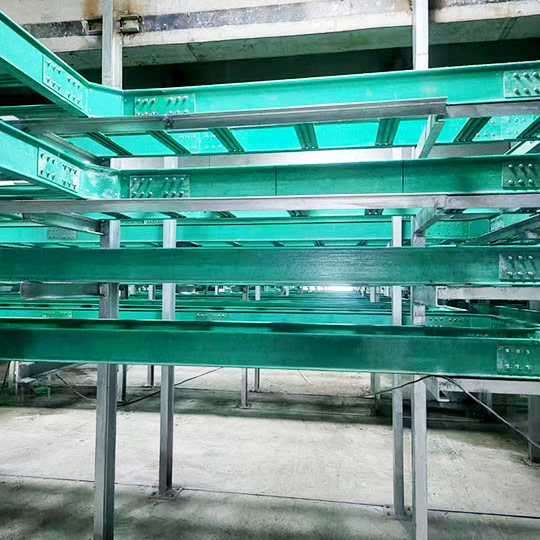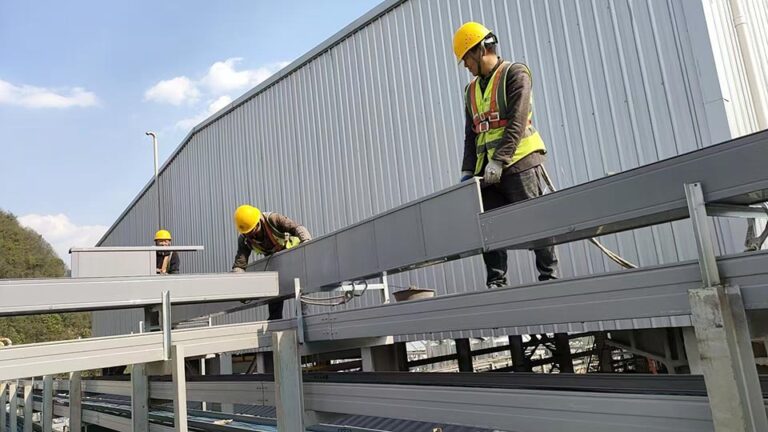Cable trays for electrical systems are an integral part of ensuring efficient, safe, and organized electrical infrastructure in both industrial and commercial setups. These systems offer a flexible and scalable way to manage and support electrical cables, protecting them from damage while improving accessibility for maintenance and upgrades.
In this blog, we will dive into the key benefits, installation tips, material considerations, and best practices for using cable trays in your electrical systems.

Welcome to My Blog!
Before we dive into the content, I’d love for you to join me on my social media platforms, where I share more insights, engage with the community, and post updates. Here’s how you can connect with me:
Facebook: https://www.facebook.com/profile.php?id=61576230391049
Now, let’s get started on our journey together. I hope you find the content here insightful, engaging, and valuable.
Table of Contents
Introduction
A cable tray is a system designed to support insulated electrical cables used for power distribution, data transfer, and other electrical functions. Instead of using traditional conduit systems, cable trays allow for a more organized, cost-effective, and easily accessible way of managing electrical cables in various environments.
With the growing demand for reliable and efficient electrical systems, choosing the right cable trays for electrical systems is crucial. At Yidian, we provide a diverse range of cable trays made from high-quality materials such as fiberglass, galvanized steel, and stainless steel. Our products are designed to meet the needs of modern electrical installations, from large industrial facilities to commercial buildings.
The Benefits of Using Cable Trays in Electrical Systems
Cable trays for electrical systems offer several key advantages that contribute to long-term reliability and performance. Let’s explore some of the main benefits:
Improved Cable Organization
One of the biggest challenges in electrical systems is managing cables efficiently. Cable trays provide a structured environment for cables, preventing tangling and damage. By using trays, cables are neatly organized and clearly separated, making troubleshooting and repairs faster and easier.
Enhanced Safety and Compliance
Electrical systems must adhere to strict safety regulations. Cable trays help meet these standards by providing a safe, organized pathway for cables. They reduce the risks of cables becoming tripping hazards and ensure that cables are safely routed away from high-traffic areas.
Many cable trays, such as those made from fire-resistant fiberglass or galvanized steel, are specifically designed to prevent fire hazards and meet national electrical codes.
Cost Efficiency and Easy Maintenance
Cable trays are often more affordable and easier to maintain than traditional conduit systems. Since they provide ample space for future cable expansions and upgrades, they allow for easy reconfiguration without requiring significant changes to the infrastructure.
Regular maintenance becomes more manageable as cables are visible and easily accessible in the trays. In contrast, cables hidden inside conduits can be harder to inspect and repair.
Scalability and Flexibility
Electrical systems often need to be modified or expanded over time. Cable trays for electrical systems offer the flexibility to accommodate new cables without needing a complete system overhaul. The modular design allows for easy additions, adjustments, and expansions, making cable trays an excellent choice for evolving projects.
Different Types of Cable Trays and When to Use Them
Cable trays come in a variety of types and configurations, depending on the nature of the electrical system and the environment in which they are installed. Here’s an overview of the most common types:
| Type of Cable Tray | Description | Ideal Use Cases |
|---|---|---|
| Ladder Cable Trays | Ladder-like structure with two side rails and rungs | High-capacity systems, heavy power cables, industrial environments |
| Solid Bottom Cable Trays | Tray with a solid bottom to protect cables | Areas with sensitive cables or high environmental risks (e.g., chemical exposure) |
| Wire Mesh Cable Trays | Mesh tray made from welded wire | Lightweight systems, small commercial buildings, areas with lower cable load |
| Channel Cable Trays | Narrow trays with a single side for cable support | Smaller systems or areas requiring a simple solution with moderate load capacity |
Understanding these types and their appropriate use cases will help you select the right cable tray for your project.
Material Selection for Cable Trays
The material you choose for your cable tray is crucial in determining its durability, safety, and resistance to environmental factors. Here are some common materials:
- Fiberglass (FRP)—Known for its high corrosion resistance, fiberglass cable trays are perfect for industries exposed to chemicals and extreme temperatures.
- Galvanized Steel—Galvanized steel trays offer a durable and cost-effective solution, often used in industrial environments with moderate environmental challenges.
- Stainless Steel—The most corrosion-resistant material, ideal for areas exposed to harsh chemicals or saltwater environments.
- Galvanized – Known for its robust structure and durability, galvanized ladder cable trays are commonly used in industrial environments where strength and safety are essential. These trays are designed to hold large cables and withstand heavy loads while offering a ventilated design for cooling.




Best Practices for Installing Cable Trays
Proper installation is crucial to ensuring the long-term performance of cable trays. Here are some best practices for installing cable trays for electrical systems:
- Plan the Layout: Properly assess the system’s layout before installation. Ensure trays are strategically placed for easy cable access and future scalability.
- Follow Load Specifications: Overloading cable trays can lead to damage and inefficiency. Be sure to adhere to the recommended load capacities for the trays you are using.
- Allow for Expansion: Leave room for future cable additions or modifications. A flexible, scalable system is more cost-effective in the long run.
- Ensure Proper Grounding: To prevent electrical hazards, make sure the trays are properly grounded, especially if you are using metal trays.
Conclusion
Cable trays provide unmatched benefits in terms of organization, safety, and long-term functionality. By offering a cost-effective, scalable, and flexible solution for cable management, cable trays for electrical systems ensure that your infrastructure remains organized and up-to-date with minimal maintenance. Whether you are designing a new electrical system or upgrading an existing one, cable trays are an essential part of the process.
At Yidian, we offer a wide range of cable trays to meet your specific project needs. From fiberglass to galvanized steel options, we have the right materials and designs to ensure the success of your project. Let us help you choose the best cable tray solution for your system today.
FAQ
1. What is the difference between a ladder cable tray and a solid bottom cable tray?
Ladder cable trays have a skeletal frame with horizontal rungs, which allow for better heat dissipation and ventilation. Solid bottom cable trays provide complete protection for cables, making them ideal for sensitive or hazardous environments.
2. How do I know the right size of cable tray to use?
The size of the cable tray depends on the number and size of the cables, the expected load, and the required space for future expansions. Consult with professionals or manufacturers to get the correct dimensions.
3. Are cable trays fire-resistant?
Yes, many cable trays, especially those made from fiberglass and steel, are designed to be fire-resistant, helping to prevent the spread of flames and ensuring safety in industrial settings.
4. Can cable trays be used in outdoor environments?
Yes, cable trays for electrical systems made from galvanized steel or stainless steel are perfect for outdoor installations, as these materials are resistant to rust and corrosion.
5. How often should cable trays be maintained?
Cable trays should be inspected regularly to ensure cables are securely fastened and not damaged. Maintenance intervals depend on environmental conditions but typically range from six months to a year.



